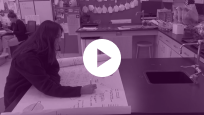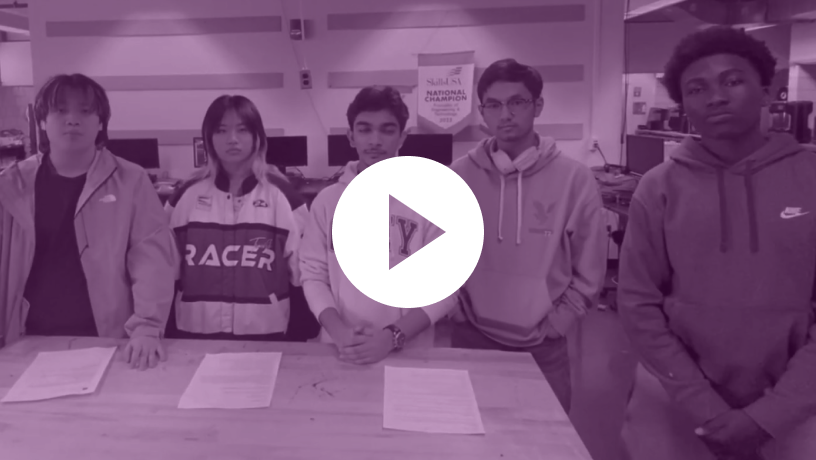On February 27, 2024, the U.S. Department of Education announced the winning teams of the Your Place in Space Challenge. Dr. Amy Loyd, Assistant Secretary for the Office of Career, Technical, and Adult Education, announced the eight winning teams, celebrating dedicated teachers and their innovative students. Winning teams were selected based on scores from the independent judging panel, and will receive $6,250 and in-kind prizes.
Meet the eight winning teams:
Freeze-Dried Probiotics: Decreasing gut epithelium leakage and reducing risk of food-borne illness in astronauts
Chapel Hill High School | Chapel Hill, North Carolina
A daily probiotic and vitamin pill to strengthen astronauts’ pathogen resistance and improve function of the epithelial barrier junctions. This pill would ensure astronauts remain healthy and allow them to complete essential tasks.
Team Members: Clare Matusevich (CTE Team Lead), Sophie Lawrence, Margaret (Eden) Ragsdale
Anderson W. Clark Magnet High School | La Crescenta, California
A navigation app to record astronaut and rover travel on Mars using georeferenced high-resolution imagery and ArcGIS mapping. By mapping significant landmarks and locations on Mars’ surface, astronauts could safely navigate unfamiliar territory.
Team Members: Dominique Evans-Bye (CTE Team Lead), Seedra Elias, Aleen Jivalagian, Angelina Joby, Noah Kurien, Jayden Tanner
Collierville High School | Collierville, Tennessee
A planter box using lights and water sprayers to grow plants in space. Plants grown in space could be used for food and medicine by astronauts.
Team Members: Mark Gray (CTE Team Lead), Jonathan Clements, Kenzie Slakans, Emmy Watts
Greater Lowell Technical High School | Tyngsborough, Massachusetts
A functional space habitat model with rooms that simulate space operations such as scientific experiments, robotics, and day-to-day living. Future engineers and astronauts could use the habitat to train for work and life in space.
Team Members: Susan Youens (CTE Team Lead), Henry Yukawa Bento, Stephen Gatama, Patrick Khiev, Channang (DEvan) Oun, Dhruv Patel, Kailyn Phomveha, Jenna St. Aubin
Halifax County High School | South Boston, Virginia
A shelf-stable prepackaged meal to provide astronauts with nutritious and sustainable food sources. The waste generated from PlantPods could be repurposed into compost and used to grow new food during long-duration space missions to Mars.
Team Members: Victoria Worley (CTE Team Lead), Sania Buster, Malik DePina, Isabella Russo, Jamarion Slayton, Armond Tucker
AI Satellite System for Cybersecurity: Using recycled materials to prevent cyberattacks in low Earth orbit
Hirschi High School | Wichita Falls, Texas
A security system to protect satellites in low Earth orbit. This system would harness advanced threat-detection algorithms to continuously scan global networks and offer real-time data and intelligence.
Team Members: Megan Widner (CTE Team Lead), 24 students from Hirschi High School, 27 students from Wichita Falls High School, 20 students from S.H. Rider High School
Kealakehe High School | Kailua Kona, Hawaii
A series of simulators to inspire the next generation of space industry professionals. Through a welding simulator, a space kitchen simulator, and an emergency onboard task simulator, participants could experience space conditions from Earth and build skills to prepare for space industry careers.
Team Members: Justin Brown (CTE Team Lead), Archer Ankrum, Kai Greenlee, Alicia Henriques, Azalea Thorp, Kenta Vanderpool
Shaker High School | Latham, New York
A hydroponics system to grow high-quality, nutrient-dense food on Mars. Powered by a sustainable nuclear reactor, the system would grow a wide variety of plants using only small quantities of water.
Team Members: Joel Scism (CTE Team Lead), Jackson Doolittle, Diego Luna








